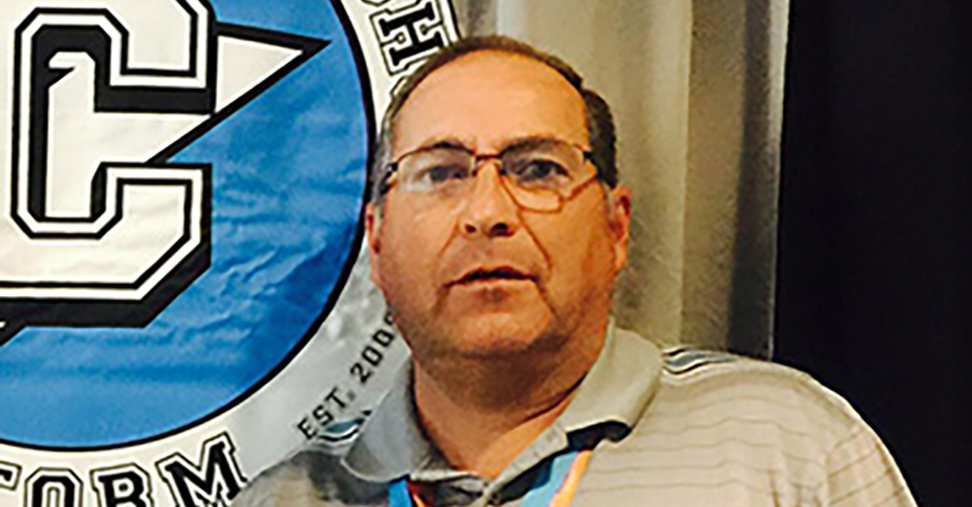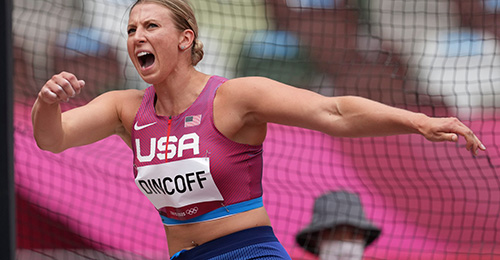PHILOSOPHY & THOUGHTS
1. What would you say the 3 main keys to your teams successes have been? 1) comradery, 2) Off Season training, 3) Weight Training
2. What is your basic philosophy on training ? (Run everyday a minimum of ? Hills are the Key? Mileage, mileage, mileage? Effort over pace?…etc) 1. Rest and Recovery during and in between seasons is just as important as the actual training. Just like a tire there is only so much tread on a tire, there is only so much a body can take before it breaks down.
3. Miles or minutes or both?I have done both in the past. I do like mileage, because when you have inexperienced runners when you send them out on a 45 minute run, they will run for 45 minutes (slow), instead of going on a strenuous 45 minute run.
4. Effort training or Pace training? Does each have a place? Each has its place, I did both when I trained runners at Rio Rancho. At Tucumcari when I had Arthur Jimenez in Track we did a lot of effort training.
5. Focusing on the watch during a race…good?bad?not an issue? In Cross Country I was not too worried about the watch, I was more concerned with place. Courses and distances in XC meets varied and I was not too concerned with the watch.
6. Running the race vs racing the race. Is there a difference and if so, how do you get your kids there? There is a great difference. I had a saying and the kids really hated it. I would yell at them ”quit running and start racing”. Just continue to work during practice about keeping focused on the task at hand.
7. Trail running importance? I was not fortunate at Tucumcari, Santa Rosa or at Rio Rancho/Cleveland to have many nice trails. Those would be nice to run on to break the monotony of all the running we did on the roads.
8. Solving the championship peak puzzle, what steps do you take or thoughts do you have to get your kids to have their best race at the right time? This was not easy. For me it was hit and miss. Sometimes when we trained well and hit the right cycles such as When Arthur Jimenez won the 1991 National Scholastic 3200 meter run in Los Angeles and placed third in Blaine Minnesota at the Jr. National Championships 5000 mtr run also when Danyel Longmire won the 1997 Class 4A State XC Championship for Rio Rancho we hit those perfect. Other times when we had a chance to win the Class 4A state boys XC championship in 2005 we were off one week.
SEASON STRATEGIES & PLANNING
1. What are the workout goals of your:
a. early season? We would do a lot of our base training (putting in miles early season, and begin some interval work once a week.
b. mid season? We would then add a second day of interval work about mid season, working on pacing and maintaining pace endurance
c. late season? Begin to taper off, shortening the rest period and trying to maintain pace work. Sometimes cutting back on the number of intervals as the season was getting close to the post season.
d. championship season?
2. What type of workouts would you define as a hard day ? Hard days were our interval/pace work on the track/ XC course work, etc…,a recovery day? Recovery were the distance runs in between the interval days. Early in the season when we are doing only one interval or no intervals some of our hard days were certain timed distance runs followed the next day with a comfortable long run.
3. A lot of coaches talk about a ‘Hard/Easy” schedule. Is this your workout strategy? I definitely believed in the Hard Easy philosophy. Some coaches don’t believe in this, but when you break down the muscle fibers you must allow the muscle to heal/rebuild or injuries will occur.
4. Using the table below, what would be an example of your GENERAL hard/easy schedule, OR if that is not your training strategy, show how your GENERAL training schedule would look.
|
MONDAY |
TUESDAY |
WEDNESDAY |
THURSDAY |
FRIDAY |
SATURDAY |
SUNDAY |
|
Example of Monday workout 2 mile warm up 5 x 1000 @ determined pace Boys Ex: 3:05 to 3:20 Recovery 4:00, cut down recovery the next time we do 1000’s. You want the athletes to build confidence and hit the determined time. 2 mile cool down |
Example of workout 6 to 9 mile run 10 strides on the grass Weight training |
Example of workout 2 mile warm up 3 sets if 4 x 300 at pace Ex: 52 to 54 17 to 18 sec per 100 mtr 3 min rec inside set and 4 min recovery between sets, cut down on recovery the next time we do 300’s 2 mile cool down |
Example of workout 5 to 8 mile run 10 strides on the grass Weight training |
Example of workout 5 mile run 10 strides on the grass |
Let’s say Saturday is Race day. |
Example of workout Run on their own at least 5 miles, more if they feel good, I did not have a set distance for max but the minimum was 5. |
5. Race every meet? We raced every week end with the exception on one week end per season. It would just depend on how the summer training went. I would predetermine which meet and let the varsity know which met we were training through. Thoughts and lessons learned?
6. Is cross training used during your season? If so, how?
DO’S AND DONT’S FOR: (These are very quick hit answers as cues. You can elaborate if needed)
1. Running form:
a. DO - Form running was done when we were doing grass stride. The older runners it was for acceleration and you younger runners it was form running.
2. Race day:
a. DO – Jog the course and warm up correctly with the team.
b. DON’T- No individual stuff, this is a team sport.
3. Racing:
a. DO – During a race concentrate and race as well as you can. Know your position in the race, pound into them, you will always have a kick, as the race nears the end improve your position to help out the team.
b. DON’T- Don’t run in a race, race in a race. Don’t lose concentration and don’t lose positions at the end of the race.
4. Summer training:
a. DO - Take some time off from track, let your body rest and heal. Do an active rest where you run a couple of days a week on your own. Training should resume around the 4th of July and this is when base training and easing into the pre season training.
b. DON’T- I don’t believe in running year round. Rest and recovery is essential for young athletes, if that means go out for another sport in the off season then by all means play another sport and that will help train some other muscles that we may not use in running.
5. Late season refinement:
a. DO – Taper your work outs to meet your needs.
b. DON’T- Over train jus to over train because somebody else is doing it.
6. Meet/race scheduling:
a. DO – Have some word on how you want your schedule to be made, you can plan your training around your schedule
7. Injuries:
a. DO – Let athletes heal,
b. DON’T- run athletes when they are not ready to compete
2015 Cross Country Summit - Legends Series, Part 2 ( 6:20pm - 7:30 on Monday, July 27th, 2015)
TRAINING
1. What tells you that an athlete is ready for another level of training? Getting through workouts with ease and not be challenged.
2. Speed Training? - when & how? I called this pace/interval training and we did it once a week early, and added a second day mid season.
3. Favorite workout that you as a coach look forward to & why? 1000’s at pace, working on endurance and race pace
4. Favorite workout your kids look forward to and why? My kids liked to run the 6 sets of 3 x 200’s
5. Your favorite "go-to" specific course element workout for (pick 2) hills/start/passing/sharp turns/sand/downhill running……?
6. Explain your most beneficial recovery routine/technique after workouts? We would just do walk jogs, nothing specials
7. The 2 biggest mistakes you see runners making during training and solutions? Going hard everyday and not letting the body heal and recover.
MOTIVATION
1. What technique do you use to inspire off season commitment? This is a team sport, don’t let your team mates down that are working hard to improve the team
2. How do you beat the 3rd quarter lull (That time in the season when athletes may lose focus, motivation or get in a training rut ? This is some of the times we would train through a meet so the kids can get hungry to race and get away from training.
3. Your key team & individual motivational technique? Mine was just simple, don’t be the weak link, this is a team sport, every body counts.
INJURY PREVENTION
1. Two signs of overtraining and solutions? Injuries, Injuries, we would do ice baths after work outs and added drinking chocolate milk to our ice bath routine.
2. Two most common injuries to be aware of? Our problem was shin splints and Hip pointers
3. Your favorite routine/exercises for injury prevention?
4. What are the most common red flags that tell you that an athlete needs days off? Pure fatigue and not running with the group they should be training with.
5. Alternative training through an injury or rest? Stationary bike and elliptical
6. What determines when an athlete is ready to resume training after an injury? Honestly I would my trainer make that call


 Larry Chavez is the 112th inductee into the NMAA Hall of Fame, with a career in education that spanned over 38 years. He devoted his entire career to the youth of New Mexico.....
Larry Chavez is the 112th inductee into the NMAA Hall of Fame, with a career in education that spanned over 38 years. He devoted his entire career to the youth of New Mexico..... Newell, a graduate from Highland High School and 3-time State Champion, has attended two Olympic games for team Canada.
Newell, a graduate from Highland High School and 3-time State Champion, has attended two Olympic games for team Canada. Former New Mexico State volunteer assistant track and field coach Rachel Dincoff reached the pinnacle of her event...
Former New Mexico State volunteer assistant track and field coach Rachel Dincoff reached the pinnacle of her event...